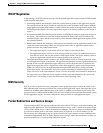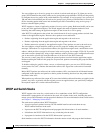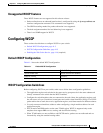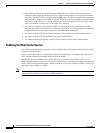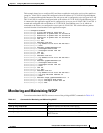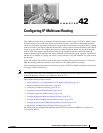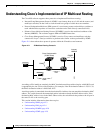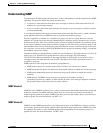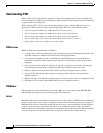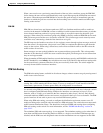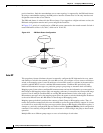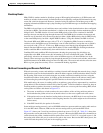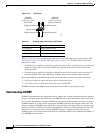
CHAPTER
42-1
Catalyst 3750-E and 3560-E Switch Software Configuration Guide
OL-9775-02
42
Configuring IP Multicast Routing
This chapter describes how to configure IP multicast routing on the Catalyst 3750-E or 3560-E switch.
IP multicasting is a more efficient way to use network resources, especially for bandwidth-intensive
services such as audio and video. IP multicast routing enables a host (source) to send packets to a group
of hosts (receivers) anywhere within the IP network by using a special form of IP address called the IP
multicast group address. The sending host inserts the multicast group address into the IP destination
address field of the packet, and IP multicast routers and multilayer switches forward incoming IP
multicast packets out all interfaces that lead to members of the multicast group. Any host, regardless of
whether it is a member of a group, can send to a group. However, only the members of a group receive
the message.
To use this feature, the switch or stack master must be running the IP services feature set. To use the
PIM stub routing feature, the switch or stack master can be running the IP base image.
Unless otherwise noted, the term switch refers to a Catalyst 3750-E or 3560-E standalone switch and to
a Catalyst 3750-E switch stack.
Note For complete syntax and usage information for the commands used in this chapter, see the Cisco IOS IP
Command Reference, Volume 3 of 3: Multicast, Release 12.2.
This chapter consists of these sections:
• Understanding Cisco’s Implementation of IP Multicast Routing, page 42-2
• Multicast Routing and Switch Stacks, page 42-9
• Configuring IP Multicast Routing, page 42-10
• Configuring Advanced PIM Features, page 42-25
• Configuring Optional IGMP Features, page 42-28
• Configuring Optional Multicast Routing Features, page 42-34
• Configuring Basic DVMRP Interoperability Features, page 42-38
• Configuring Advanced DVMRP Interoperability Features, page 42-43
• Monitoring and Maintaining IP Multicast Routing, page 42-52
For information on configuring the Multicast Source Discovery Protocol (MSDP), see Chapter 43,
“Configuring MSDP.”



